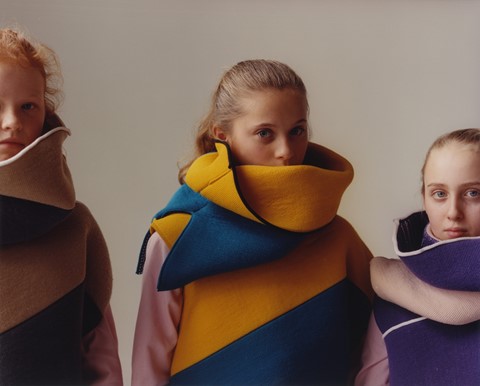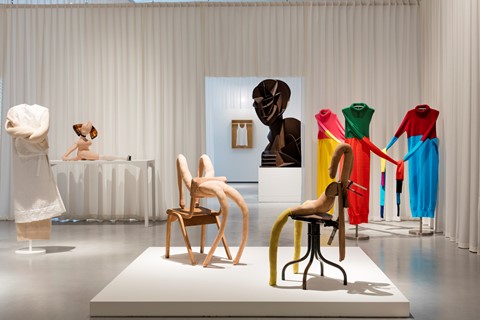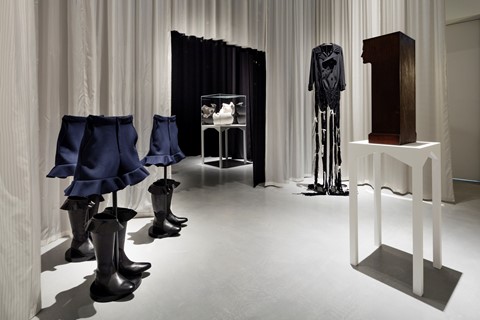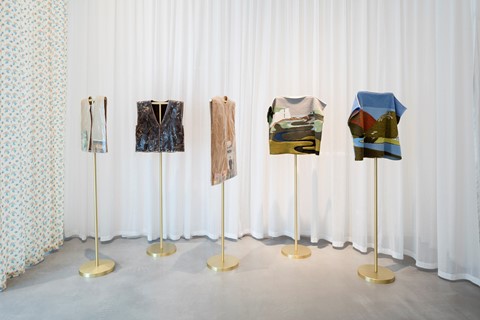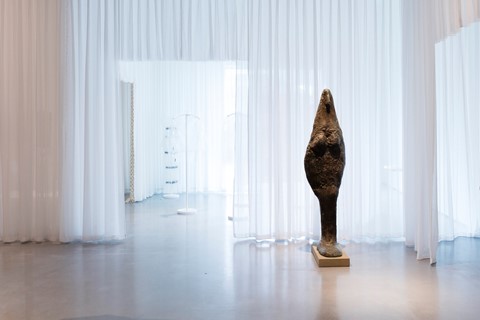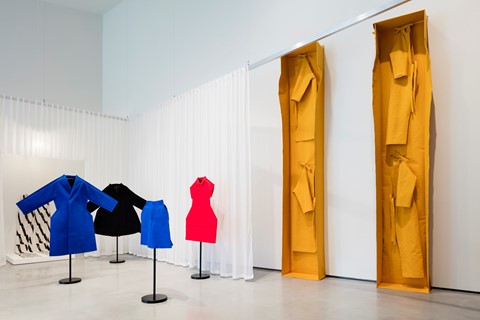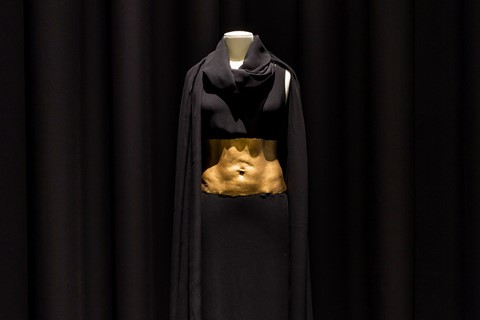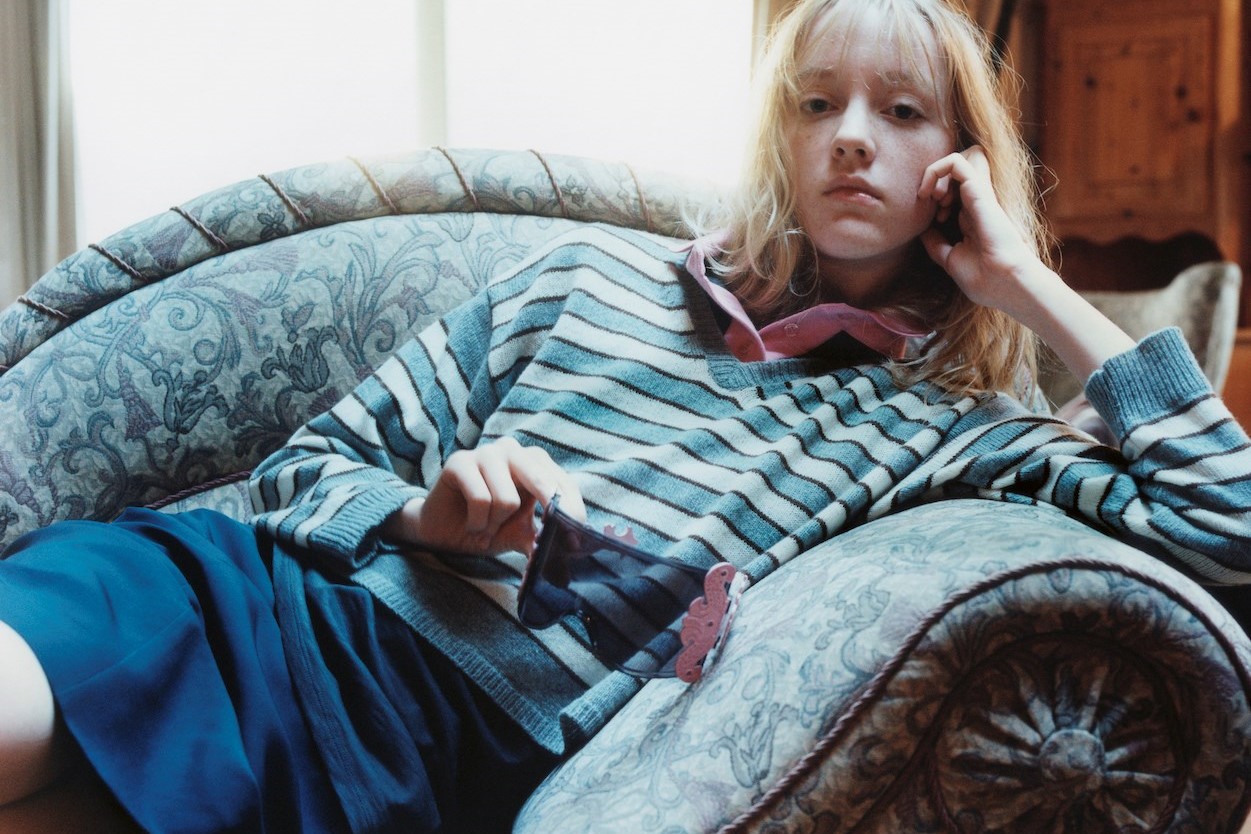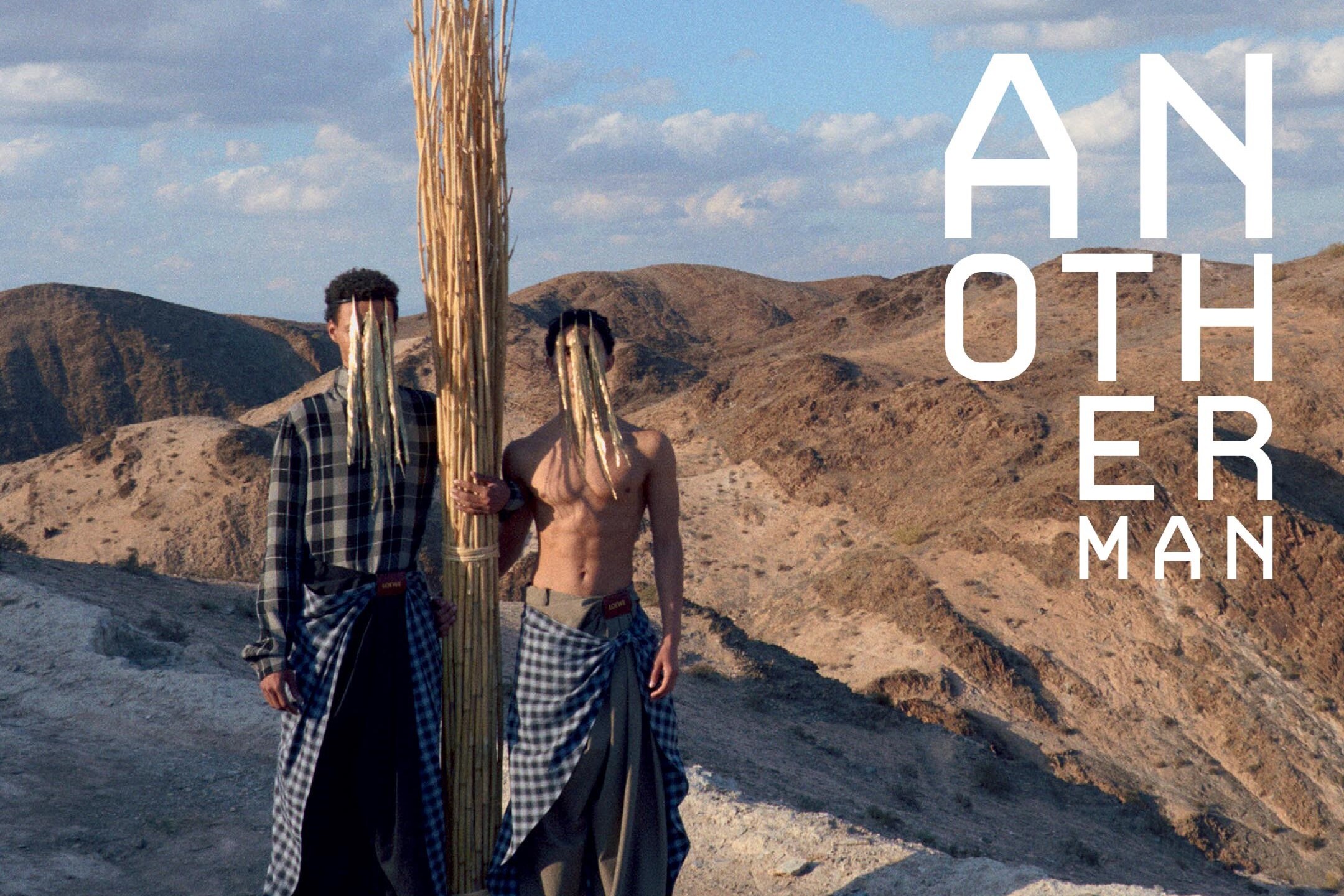Jonathan Anderson is addicted to art. “I think it comes from my grandfather,” he mused yesterday at the preview of his new exhibition Disobedient Bodies: J.W. Anderson Curates the Hepworth Wakefield, which opens today. “He’s an obsessive collector of British ceramics, and at one point, was of grandfather clocks. When we were kids, he would make us draw vases over and over again to get the symmetry right.” Later on in life, Anderson discovered Virginia Woolf, Roger Fry and their Bloomsbury Group fellows, along with those belonging to the experimental design collective known as the Omega Workshops. A love affair – or addiction, should we say – had well and truly begun.
Today, Anderson boasts his own collection of British ceramics – objects crafted by the likes of John Ward and Bernard Leach – along with other examples of British modern art and design, and thousands of books. Not only does he hoard (in the best possible way), he compulsively goes to gallery shows, explaining that he “can’t see enough of them” and has a fear of “missing something”. Naturally, this obsession has an effect on his work as a fashion designer – he currently works as creative director of his eponymous label J.W. Anderson and of Spanish luxury house Loewe. While he’s referenced legendary textile artist John Allen (for those amazing landscape scene jumpers for S/S15) and directly collaborated with American sculptor Richard X Zawitz (on the S/S16 bags inspired by the artist’s ‘Tangles’), among other examples, Anderson often expresses his art in a far less literal and altogether more pervasive way, through his unerring belief that “fashion should be cultural, not luxury”.
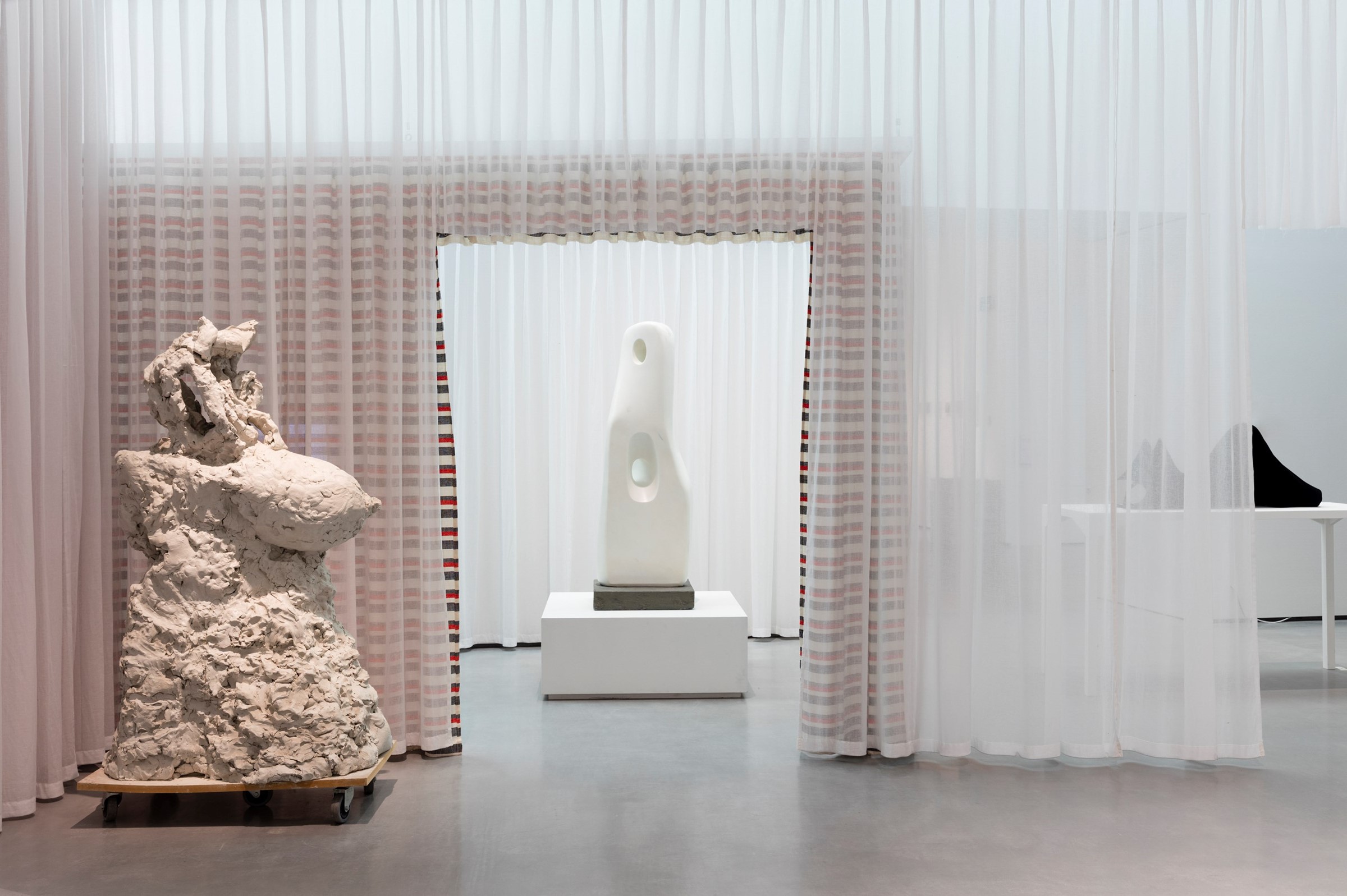
That’s one of the underlying premises of Disobedient Bodies which, nearly two years in the making, is now on show at the Hepworth Wakefield, the breathtaking neo-brutalist gallery in Wakefield, Yorkshire and one of Anderson’s favourite institutions. Not a retrospective (“Once you have one of those, you’re over,” he says, not in jest), the show brings together a wide range of works that relate in some way to the human body. With fashion, art, photography and design on show, displayed on a level playing field as autonomous creative acts, the boundaries between the lines between creative fields and artistic practices are dissolved – recalling a time when creative practitioners (such as those involved in the Bloomsbury Group and Omega Workshops) worked in a much more interdisciplinary way.
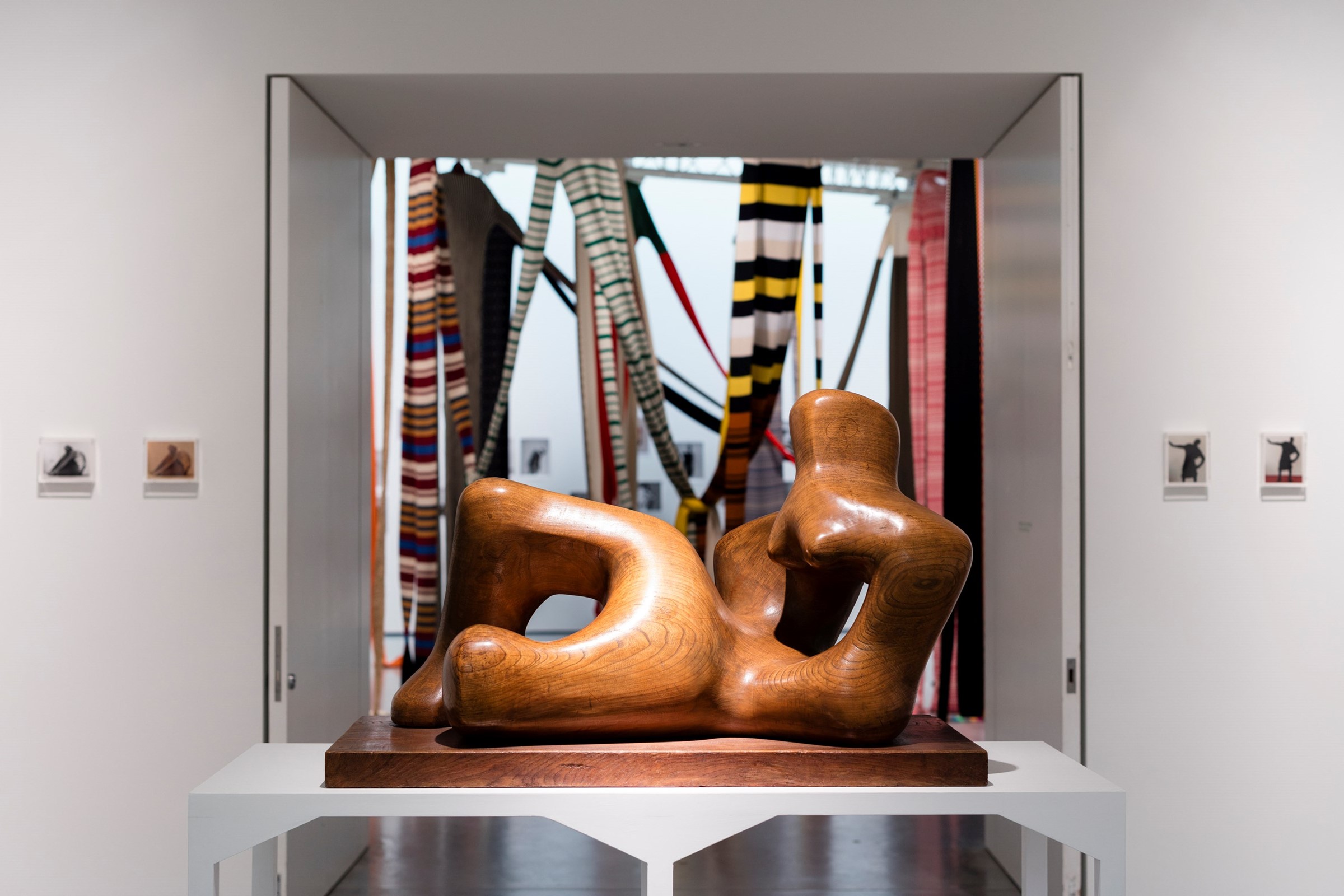
Enter the space and you’ll see one of Henry Moore’s Reclining Figures sitting adjacent to a series of photographs by Anderson’s longtime collaborator Jamie Hawkesworth; go further in and you’ll be met by Magdalene Odundo ceramics looking across the room at a 1950s silk cocktail dress by Christian Dior; an Issey Miyake lantern dress is suspended from the ceiling next to some similarly sculptural Japanese lanterns; a gigantic Naum Gabo bust sits next to a group of mannequins modelling extraordinary felt creations by Rei Kawakubo, who Anderson describes as “one of the greatest living artists that there is”. It’s as if he’s gathered all of his creative heroes in one space for a cocktail party.
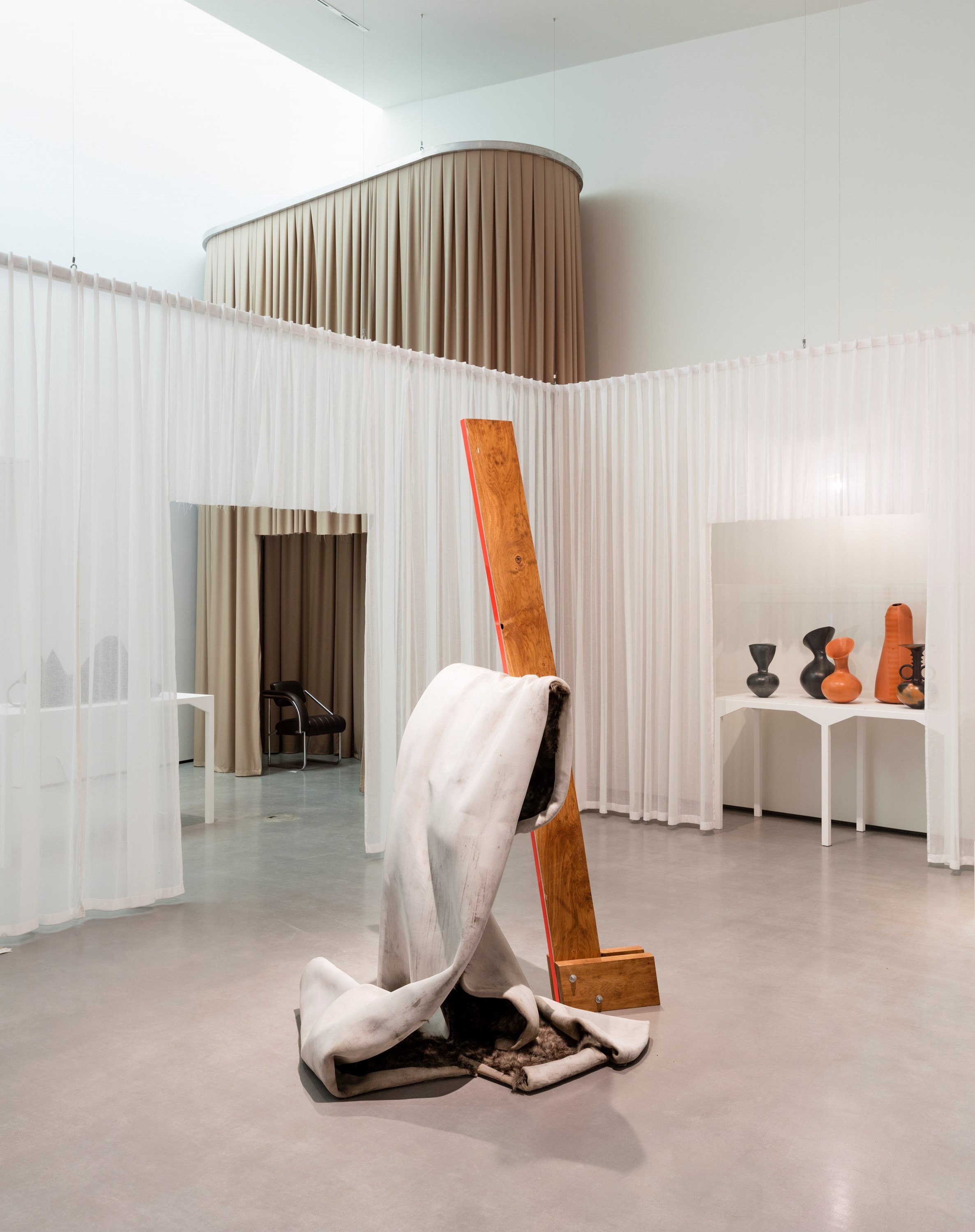
This was in fact the brief that Anderson gave 6a Architects who designed the space. “The idea of the cocktail party meant that some pieces might be old friends and others might be new acquaintances, and they’re all forced to intermingle with each other,” explain Stephanie Macdonald and Owen Watson of 6a Architects. These works have been put in dialogue with each other – whether they get along, or look right next to each other is besides the point. While they have their differences, they also have their commonalities (besides a relationship to their human body): all of them represented a creative act of rebellion at one moment in time. And it’s no surprise that they resonate and, ultimately, inspire Anderson because of this.
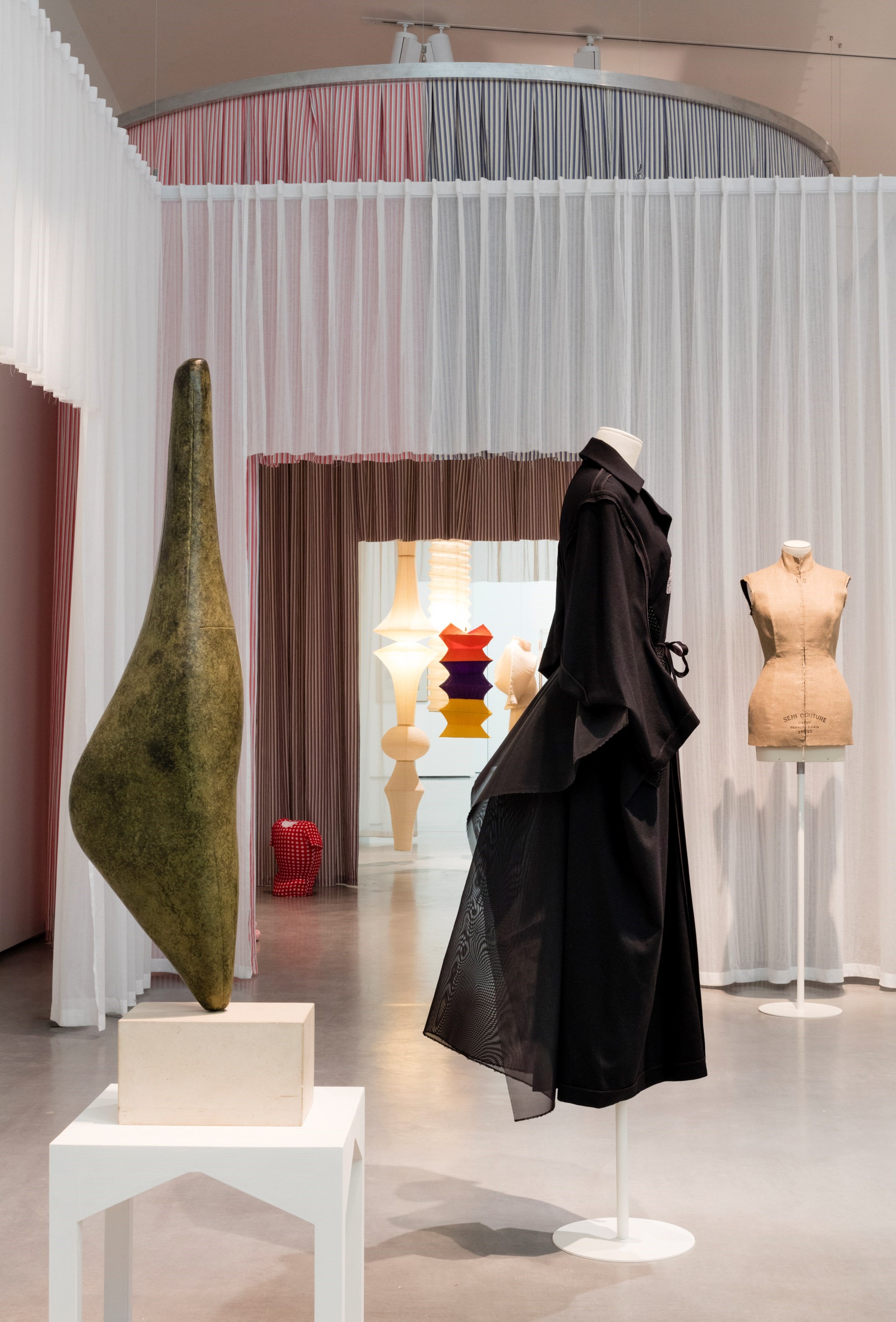
Something I, personally, have always enjoyed about his work is how it challenges our notions of what looks right and wrong, beautiful and ugly. In his collections, he often includes things that look intentionally awkward – case in point, the ‘skorts’ of his A/W13 menswear collection (to which the Daily Mail responded with a perhaps expected spew of uneducated vitriol) and the gargantuan 80s leg-of-mutton sleeves of his S/S16 womenswear offering. “To think that in 1901 someone [would incorporate] the devil into furniture,” he says, gesturing to a mahogany bookcase by Arts & Crafts designer C.F.A. Voysey. “It’s like something that you’d see today in contemporary art.” Anderson adopts a similar approach in his work, designing clothes that our eyes aren’t used to seeing yet. “The moment you feel like you’ve done something wrong, that’s a good thing because it means it’s not ready. If you do something for right now, it defeats the whole point. It’s the idea is that you should look into a crystal ball and think, ‘this is what I believe should be important in the next six months,’” says the designer.
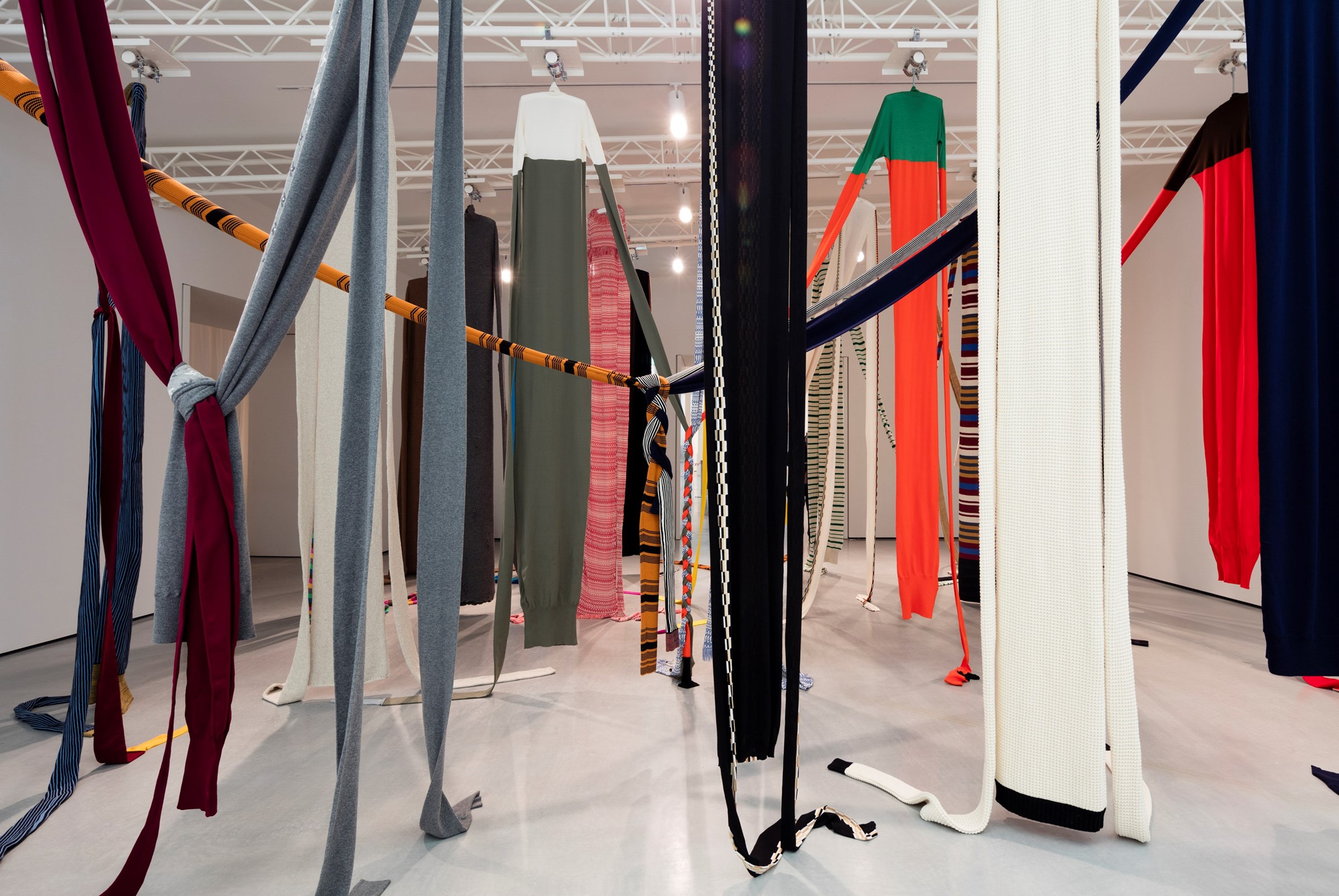
This exhibition also reflects another passion or, again in Anderson’s words, “addiction” of his: collaboration. The show is the fruit of countless partnerships – with 6a Architects, Oliver Knight and Rory McGrath of London-based design studio OK-RM who created the show’s accompanying book, and perhaps most importantly, Andrew Bonacina, the chief curator of the Hepworth Wakefield. “The addiction for me is to work with people and to collaborate, because you cannot do these things on your own,” he says, somewhat self-effacingly. “I’m a spokesperson. It took hundreds of people to pull this off.” “It was a very conversational curatorial process,” says Bonacina. “It was like a melting pot where we were adding objects over six or so months. [Jonathan] might suggest a piece of fashion, and I might suggest a piece of art that speaks to that.”
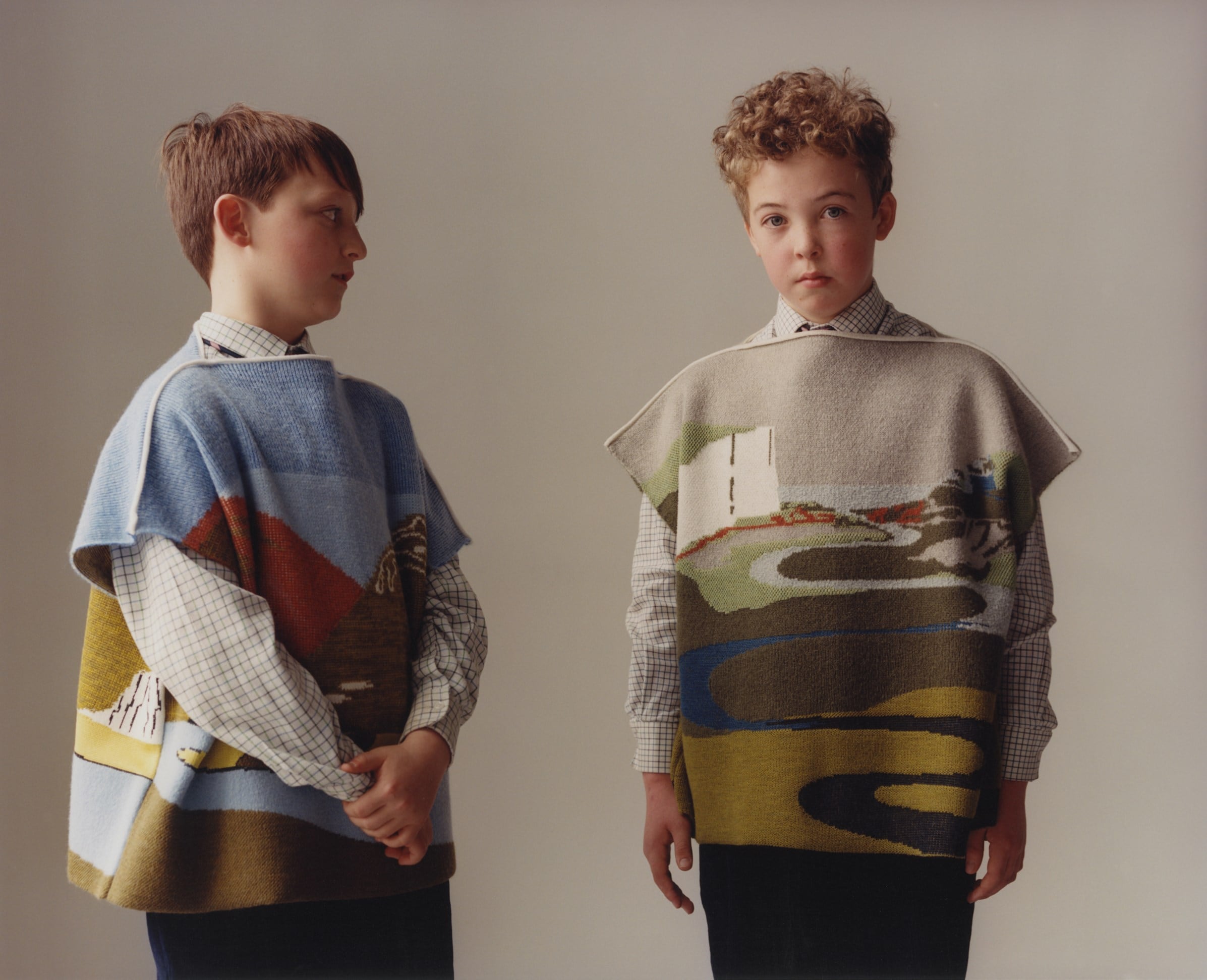
Anderson’s collaborators include Jamie Hawkesworth, who has arguably played more of a role in visualising the world of J.W. Anderson than any other. He’s shot several photos series for the show – one featuring people covered totally in fabric, rendering them like Moore-ish monoliths, another starring 123 local schoolchildren modelling clothes by Anderson, Comme des Garçons and Issey Miyake. Playful and reminiscent of Hawkesworth’s Preston Bus Station series, the latter shows Anderson’s designs in a different light, one that’s a far cry from the high fashion magazines spreads and fashion week street style galleries we might be used to seeing them in.

At a time when the word ‘fashion’ is synonymous with products, Anderson has provided a clear and attractive alternative: the opportunity to look at clothes, not as something to be bought or posed in on Instagram, but as something that can be appreciated in the same way as art, photography and design. Fashion – or at least his approach to it – is cultural, as this exhibition so emphatically demonstrates.
Disobedient Bodies: J.W. Anderson Curates the Hepworth Wakefield runs from March 18 – June 18, 2017.
